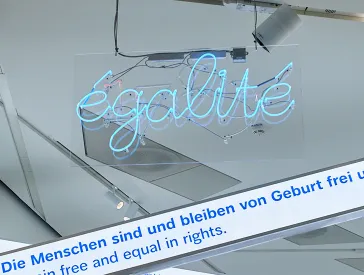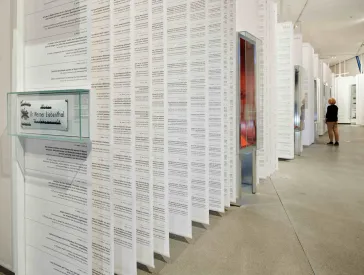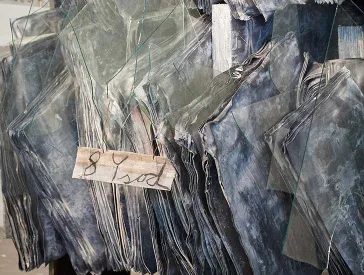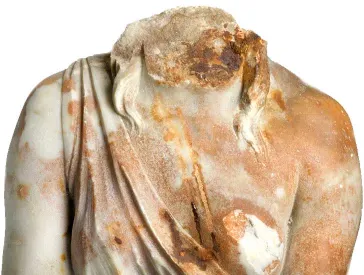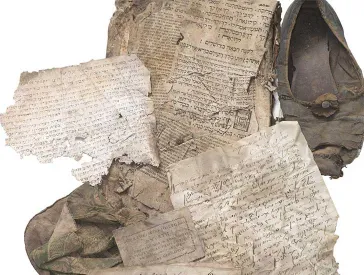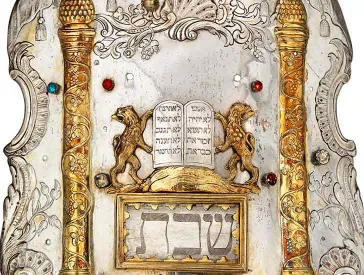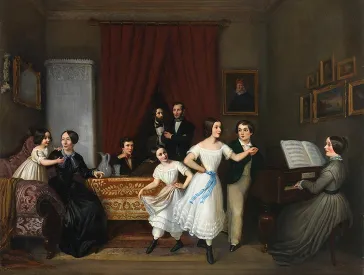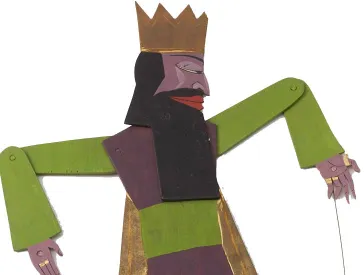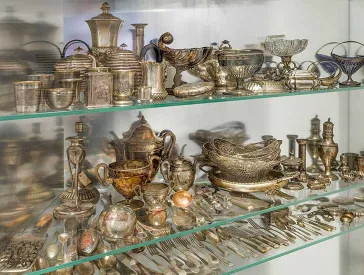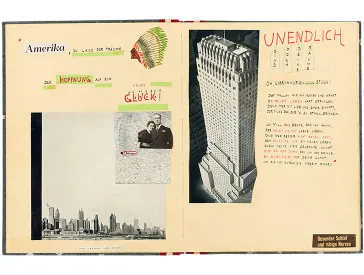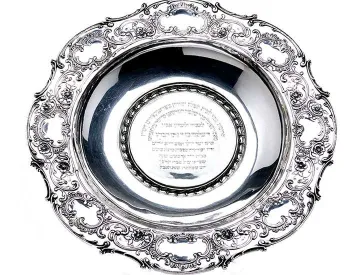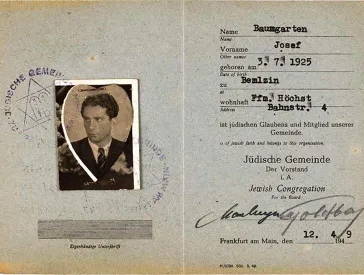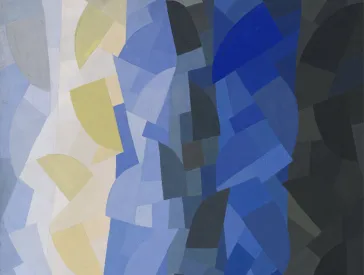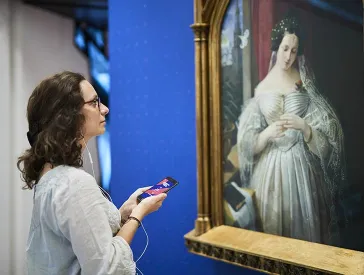L’amitié au coeur
Unusual Objects From Our Permanent Exhibition Tell Stories of Jewish Life
During the Second World War, the Nazis stole this sculpture from Baron de Rothschild’s collection in Paris and took it to Hermann Göring’s hunting lodge, Carinhall. In the late 1950s, the Rothschild family was awarded compensation for its lost assets by the Federal Republic of Germany. This sculpture was considered lost until fragments were discovered in the early 1990s. Its arms and head are still missing.
L’amitié au coeur (Friendship of the Heart) by Étienne-Maurice Falconet (1716–1791), Paris, 1765, marble; Jewish Museum Berlin, loaned by the Federal Republic of Germany, photo: Roman März. For provenance research see: www.provenienzdatenbank.bund.de.
Can I introduce myself?
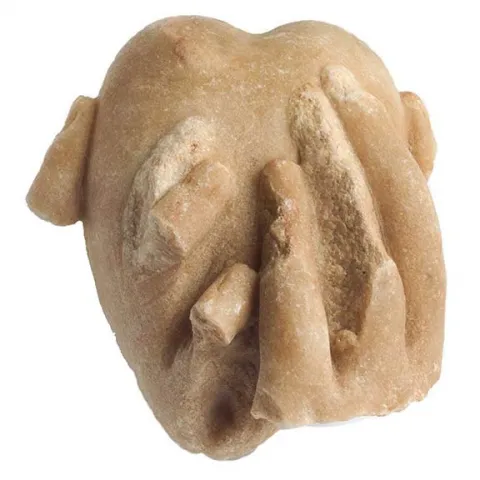
If in the exhibition you touch the heart of the statue, L’amitié au coeur introduces itself; audio track from our JMB app. L'amitié au coeur's heart; Jewish Museum Berlin, accession L-2018/1/3, loaned by the Federal Republic of Germany, photo: Roman März. For provenance research see: www.provenienzdatenbank.bund.de.
Read along: the Friendship of the Heart Introduces Itself
You touch my heart – can I introduce myself? They call me L‘amitié au cœur or ‘heartfelt friendship’.
I held my heart in my hands once.
I am already several hundred years old. Perhaps you’re asking yourself why my head and arms are missing, and how I arrived in the Jewish Museum Berlin?
The sculptor who made me in 1765 was called Étienne-Maurice Falconet. I was made from marble for Madame Pompadour, mistress of Louis XV.
My unaffectedness and grace were celebrated when I was first presented in Paris. Later, I found myself in the Maurice de Rothschild family art collection.
My time in France came to an abrupt end in 1940. The Nazis looted me and took me to Hermann Göring’s ostentatious Carinhall hunting lodge northeast of Berlin, which is where Göring displayed his stolen art treasures. Sculptures, paintings, old masters and tapestries were all violently seized from Jewish owners across Europe.
In April 1945, shortly before the end of the war, Göring ordered his estate to be blown up and I lay smashed and buried in an air-raid shelter. I was considered missing until I was recovered in the 1990s.
Who I belong to today is a difficult question to answer. The Rothschild family, my actual owners, were compensated by the West German state at the end of the 1950s for the loss of their assets. So today I am, officially, the property of the German state.
History has left its unmistakable mark on me and on my marble. Maybe now I'm a symbol of abduction, loss, destruction… and of the impossibility of justice ever really being fully restored.
Core Exhibition: 13 Objects – 13 Stories (13)
